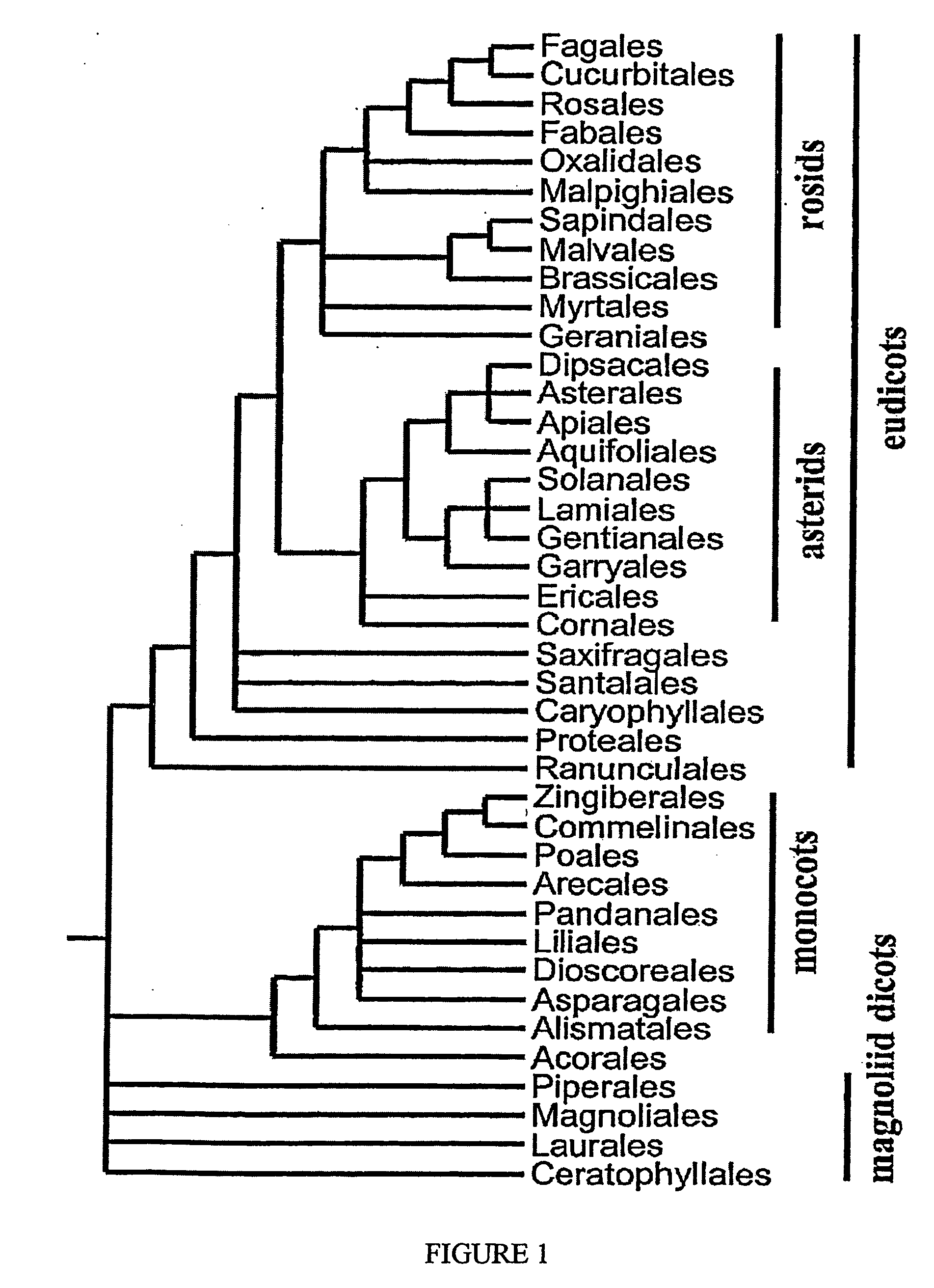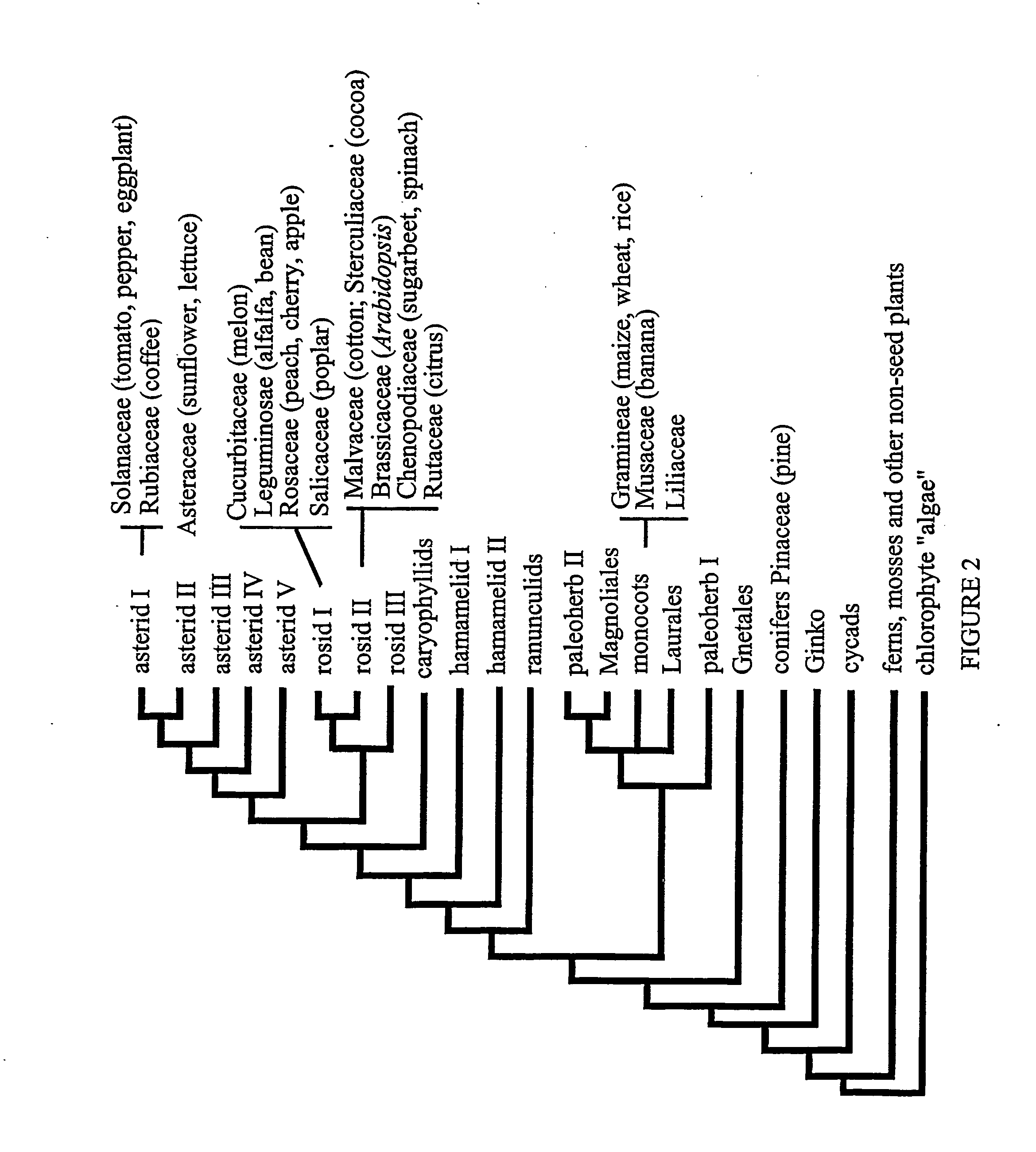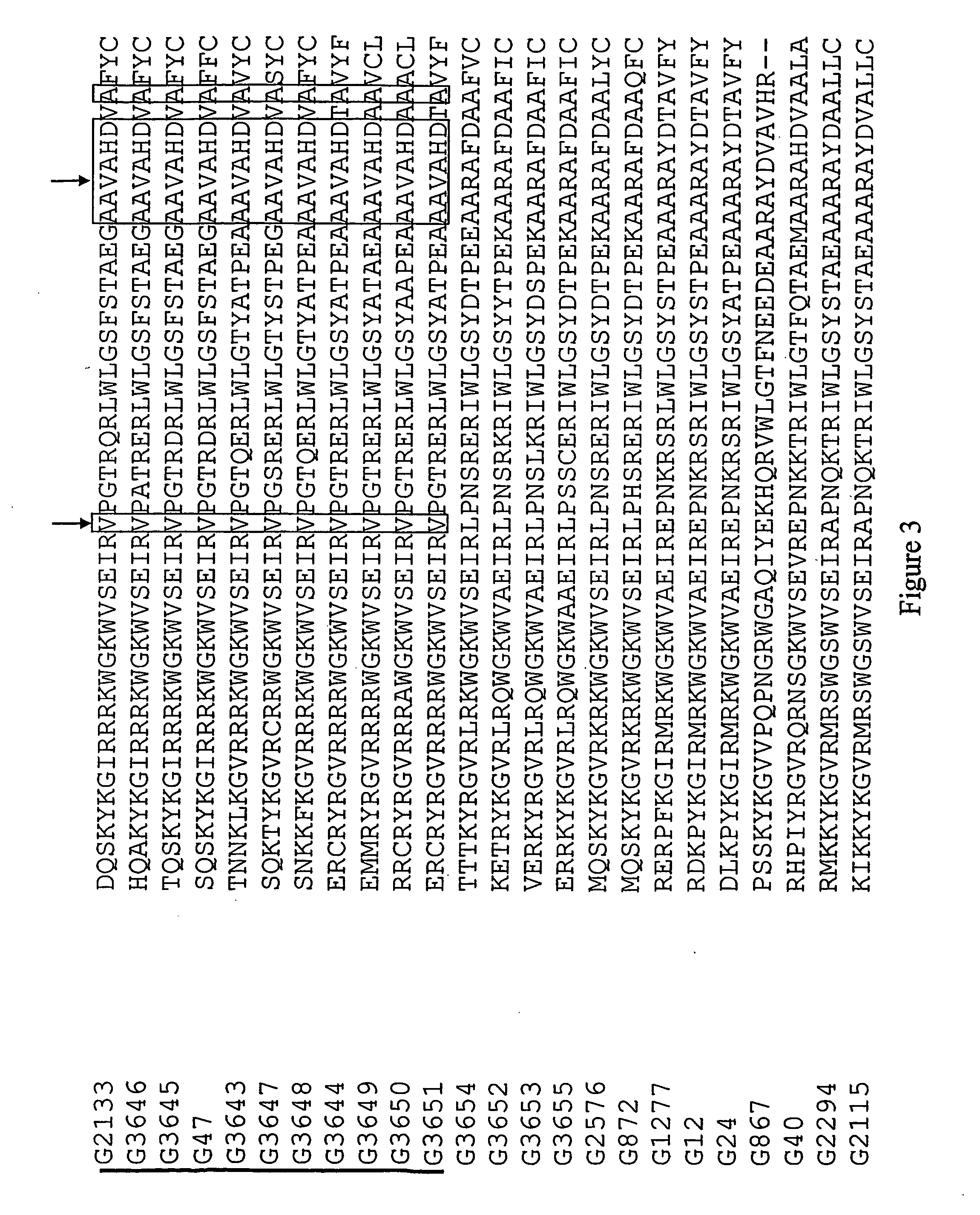Plant transcriptional regulators
a transcriptional regulator and plant technology, applied in the field of plant transcriptional regulators, can solve the problems of plant death, and plant growth under unfavorable conditions
- Summary
- Abstract
- Description
- Claims
- Application Information
AI Technical Summary
Benefits of technology
Problems solved by technology
Method used
Image
Examples
examples
[0365] The invention, now being generally described, will be more readily understood by reference to the following examples, which are included merely for purposes of illustration of certain aspects and embodiments of the present invention and are not intended to limit the invention. It will be recognized by one of skill in the art that a transcription factor that is associated with a particular first trait may also be associated with at least one other, unrelated and inherent second trait which was not predicted by the first trait.
[0366] The complete descriptions of the traits associated with each polynucleotide of the invention are fully disclosed in Examples VIII, IX and X.
example i
Full Length Gene Identification and Cloning
[0367] Putative transcription factor sequences (genomic or ESTs) related to known transcription factors were identified in the Arabidopsis thaliana GenBank database using the tblastn sequence analysis program using default parameters and a P-value cutoff threshold of −4 or −5 or lower, depending on the length of the query sequence. Putative transcription factor sequence hits were then screened to identify those containing particular sequence strings. If the sequence hits contained such sequence strings, the sequences were confirmed as transcription factors.
[0368] Alternatively, Arabidopsis thaliana cDNA libraries derived from different tissues or treatments, or genomic libraries were screened to identify novel members of a transcription family using a low stringency hybridization approach. Probes were synthesized using gene specific primers in a standard PCR reaction (annealing temperature 60° C.) and labeled with 32P dCTP using the High ...
example ii
Construction of Expression Vectors
[0371] The sequence was amplified from a genomic or cDNA library using primers specific to sequences upstream and downstream of the coding region. The expression vector was pMEN20 or pMEN65, which are both derived from pMON316 (Sanders et al. (1987) Nucleic Acids Res. 15:1543-1558) and contain the CaMV 35S promoter to express transgenes. To clone the sequence into the vector, both pMEN20 and the amplified DNA fragment were digested separately with SalI and NotI restriction enzymes at 37° C. for 2 hours. The digestion products were subject to electrophoresis in a 0.8% agarose gel and visualized by ethidium bromide staining. The DNA fragments containing the sequence and the linearized plasmid were excised and purified by using a QIAQUICK gel extraction kit (Qiagen, Valencia Calif.). The fragments of interest were ligated at a ratio of 3:1 (vector to insert). Ligation reactions using T4 DNA ligase (New England Biolabs, Beverly Mass.) were carried out ...
PUM
| Property | Measurement | Unit |
|---|---|---|
| abiotic stress | aaaaa | aaaaa |
| osmotic stress | aaaaa | aaaaa |
| abiotic stress tolerance | aaaaa | aaaaa |
Abstract
Description
Claims
Application Information
 Login to View More
Login to View More - R&D
- Intellectual Property
- Life Sciences
- Materials
- Tech Scout
- Unparalleled Data Quality
- Higher Quality Content
- 60% Fewer Hallucinations
Browse by: Latest US Patents, China's latest patents, Technical Efficacy Thesaurus, Application Domain, Technology Topic, Popular Technical Reports.
© 2025 PatSnap. All rights reserved.Legal|Privacy policy|Modern Slavery Act Transparency Statement|Sitemap|About US| Contact US: help@patsnap.com



